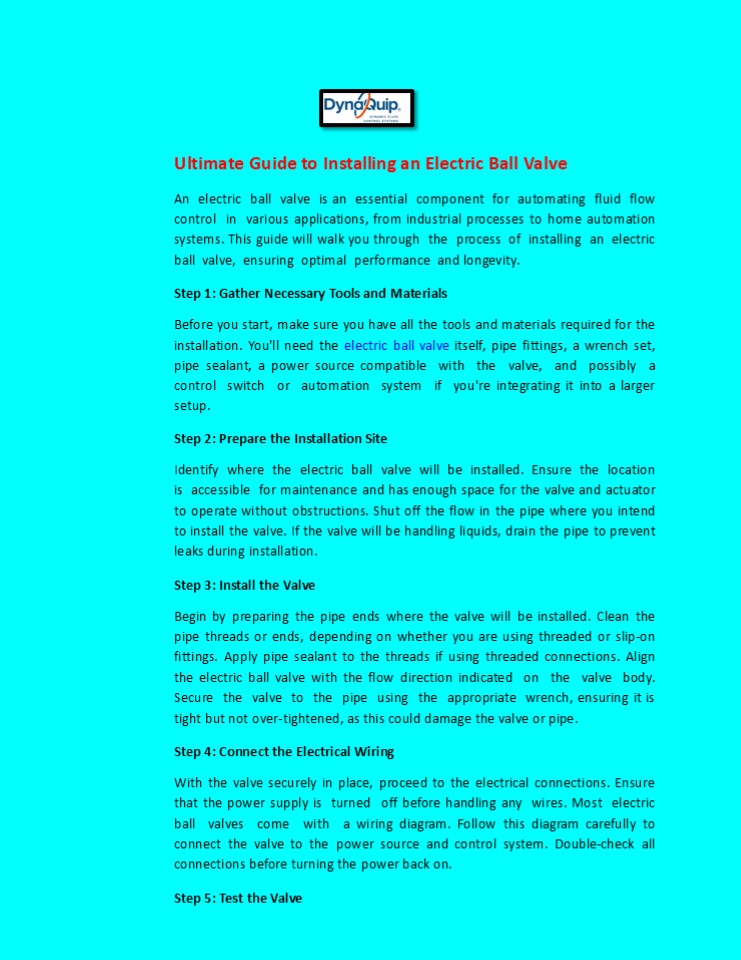Ultimate Guide to Installing an Electric Ball Valve - PowerPoint PPT Presentation
Title:
Ultimate Guide to Installing an Electric Ball Valve
Description:
Once the electric ball valve is installed and wired, it’s time to test the system. – PowerPoint PPT presentation
Number of Views:0
Title: Ultimate Guide to Installing an Electric Ball Valve
1
Ultimate Guide to Installing an Electric Ball
Valve An electric ball valve is an essential
component for automating fluid flow control
in various applications, from industrial
processes to home automation systems. This guide
will walk you through the process of
installing an electric ball valve, ensuring
optimal performance and longevity. Step 1
Gather Necessary Tools and Materials Before you
start, make sure you have all the tools and
materials required for the installation. You'll
need the electric ball valve itself, pipe
fittings, a wrench set, pipe sealant, a power
source compatible with the valve, and
possibly a control switch or automation
system if you're integrating it into a larger
setup. Step 2 Prepare the Installation
Site Identify where the electric ball valve
will be installed. Ensure the location is
accessible for maintenance and has enough space
for the valve and actuator to operate without
obstructions. Shut off the flow in the pipe where
you intend to install the valve. If the valve
will be handling liquids, drain the pipe to
prevent leaks during installation. Step 3
Install the Valve Begin by preparing the pipe
ends where the valve will be installed. Clean the
pipe threads or ends, depending on whether you
are using threaded or slip-on fittings. Apply
pipe sealant to the threads if using threaded
connections. Align the electric ball valve with
the flow direction indicated on the valve
body. Secure the valve to the pipe using
the appropriate wrench, ensuring it is tight
but not over-tightened, as this could damage the
valve or pipe. Step 4 Connect the Electrical
Wiring With the valve securely in place, proceed
to the electrical connections. Ensure that the
power supply is turned off before handling any
wires. Most electric ball valves come with a
wiring diagram. Follow this diagram carefully to
connect the valve to the power source and control
system. Double-check all connections before
turning the power back on. Step 5 Test the Valve
2
Once the electric ball valve is installed
and wired, its time to test the system.
Turn on the power supply and operate the valve
using the control switch or automation system.
Verify that the valve opens and closes fully and
that there are no leaks. If everything operates
smoothly, the installation is complete. Conclusio
n Installing an electric ball valve can be
straightforward if you follow the steps
carefully. Proper installation ensures reliable
operation and prolongs the life of the valve.
Whether for industrial use or home automation, an
electric ball valve is a powerful tool for
efficient fluid control.































